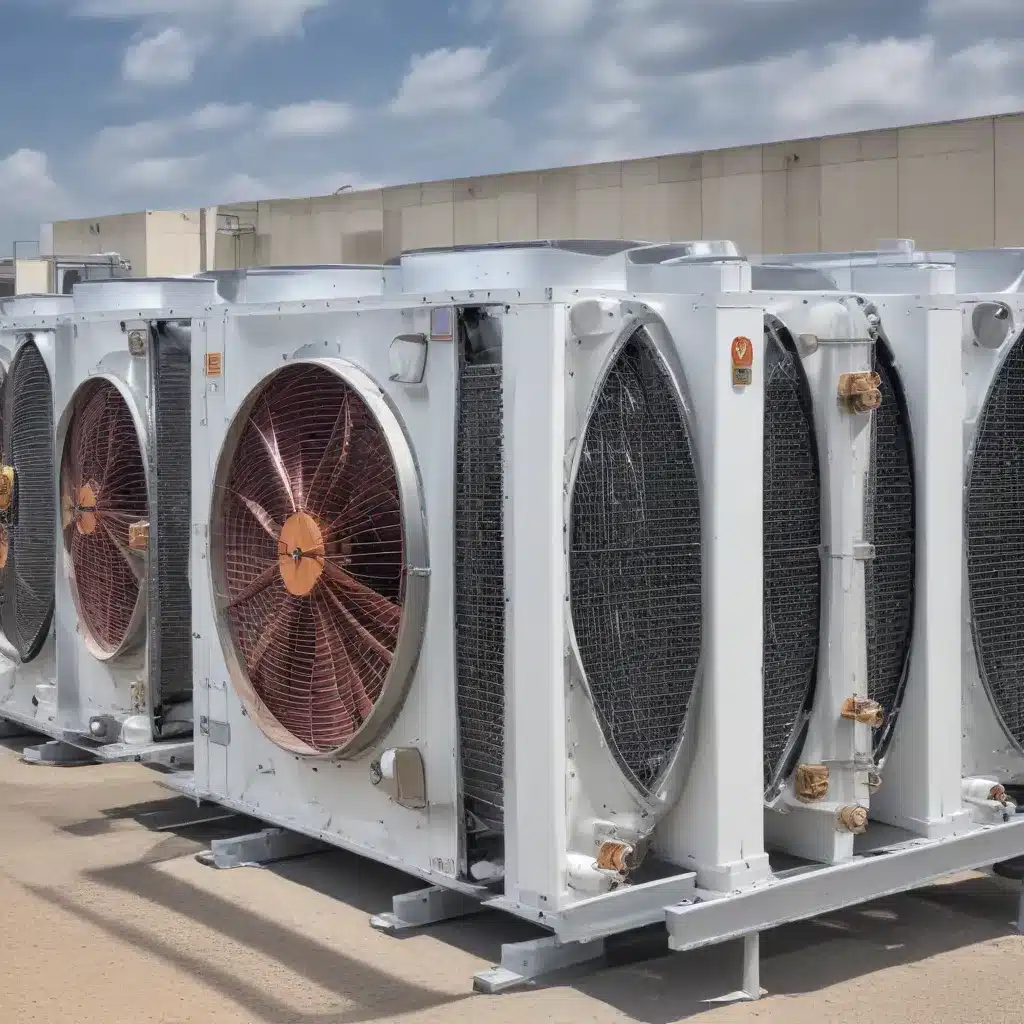
Optimizing Air-Cooled Heat Exchangers for Efficient Thermal Performance
Air-cooled heat exchangers play a critical role in a wide range of industries, from power generation to HVAC systems. As the demand for renewable energy technologies continues to grow, the need for efficient and reliable thermal management solutions has become increasingly important. In this comprehensive article, we will explore the latest advancements in air-cooled heat exchanger technology and their applications in renewable energy systems.
Understanding the Importance of Thermal Management in Renewable Energy
Renewable energy systems, such as solar photovoltaic (PV) panels, wind turbines, and geothermal systems, often generate significant amounts of waste heat that must be effectively dissipated to maintain optimal performance and efficiency. Inefficient thermal management can lead to decreased power output, reduced equipment lifespan, and increased maintenance costs.
Air-cooled heat exchangers have emerged as a popular choice for thermal management in renewable energy systems due to their simplicity, reliability, and cost-effectiveness. These heat exchangers use ambient air as the cooling medium, eliminating the need for water or other liquid coolants, which can be challenging to source or maintain in remote or off-grid locations.
Advances in Air-Cooled Heat Exchanger Design and Materials
The design and materials used in air-cooled heat exchangers have undergone significant advancements in recent years, leading to improved thermal performance and energy efficiency.
Innovative Fin Designs
One of the key areas of innovation is in the design of the heat exchanger fins. Researchers have explored various fin geometries, such as louvered, wavy, and corrugated fins, to enhance heat transfer and reduce pressure drop. These advanced fin designs can increase the surface area for heat transfer, improve airflow distribution, and minimize the formation of eddies, all of which contribute to higher thermal efficiency.
High-Performance Materials
The selection of materials for air-cooled heat exchangers has also been a focus of innovation. Manufacturers are increasingly using lightweight and corrosion-resistant materials, such as aluminum alloys and titanium, to improve the overall durability and lifespan of the heat exchangers. Additionally, the incorporation of advanced coatings and surface treatments can enhance heat transfer capabilities and reduce the impact of fouling and corrosion.
Hybrid Designs
Another emerging trend in air-cooled heat exchanger technology is the development of hybrid designs that combine the advantages of different cooling approaches. For example, some systems integrate air-cooled and water-cooled components, allowing for more efficient heat dissipation in specific applications or under varying environmental conditions.
Optimizing Air-Cooled Heat Exchanger Performance
Ensuring optimal performance of air-cooled heat exchangers in renewable energy systems requires a multifaceted approach that considers both design and operational factors.
Computational Fluid Dynamics (CFD) Modeling
Advancements in computational fluid dynamics (CFD) modeling have enabled engineers to simulate and analyze the complex flow patterns and heat transfer dynamics within air-cooled heat exchangers. This allows for the optimization of fin geometry, airflow distribution, and other design parameters to maximize thermal efficiency and minimize pressure drop.
Maintenance and Cleaning
Regular maintenance and cleaning of air-cooled heat exchangers are crucial to maintaining their performance over time. Fouling and corrosion can significantly degrade the heat transfer capabilities of the heat exchanger, leading to reduced efficiency and potential failures. Implementing best practices for cleaning and preventive maintenance can help ensure the long-term reliability and optimal performance of these systems.
Integrated Monitoring and Control Systems
The integration of advanced monitoring and control systems can further enhance the performance of air-cooled heat exchangers in renewable energy applications. These systems can continuously monitor key parameters, such as temperature, pressure, and airflow, and automatically adjust the operation of the heat exchanger to maintain optimal efficiency and respond to changing conditions.
Emerging Applications and Future Trends
As the demand for renewable energy continues to grow, the role of air-cooled heat exchangers in thermal management is expected to become increasingly critical. Several emerging applications and future trends are worth highlighting:
Concentrated Solar Power (CSP) Systems
In concentrated solar power (CSP) plants, air-cooled heat exchangers play a crucial role in the power generation process, as they are used to dissipate the waste heat from the turbines and other components. Advancements in air-cooled heat exchanger technology can help improve the overall efficiency and cost-effectiveness of CSP systems.
Data Center Cooling
As the demand for energy-intensive data processing and storage continues to rise, the need for efficient cooling solutions has become a significant challenge. Air-cooled heat exchangers are increasingly being utilized in data center cooling systems, leveraging their ability to dissipate large amounts of heat without the need for water-based cooling systems.
Hybrid and Electric Vehicle Thermal Management
The thermal management of hybrid and electric vehicles is a critical aspect of their design and performance. Air-cooled heat exchangers are being employed to cool the battery packs, power electronics, and other components, contributing to improved efficiency, reliability, and safety.
Integrated Thermal Energy Storage
The integration of thermal energy storage (TES) systems with air-cooled heat exchangers can enhance the overall efficiency and flexibility of renewable energy systems. TES can store excess thermal energy generated during periods of high production and release it when demand is high, improving the overall energy utilization and grid integration.
As the renewable energy industry continues to evolve, the role of air-cooled heat exchanger technology will undoubtedly become more prominent. By leveraging the latest advancements in design, materials, and integrated control systems, engineers and researchers can optimize the thermal management of renewable energy systems, contributing to the widespread adoption and reliable operation of these critical technologies.
To learn more about the latest developments in air-cooled heat exchanger technology and its applications in the renewable energy sector, we encourage you to visit the Air Cooled Heat Exchangers website, which provides a wealth of informative resources and expert insights.

